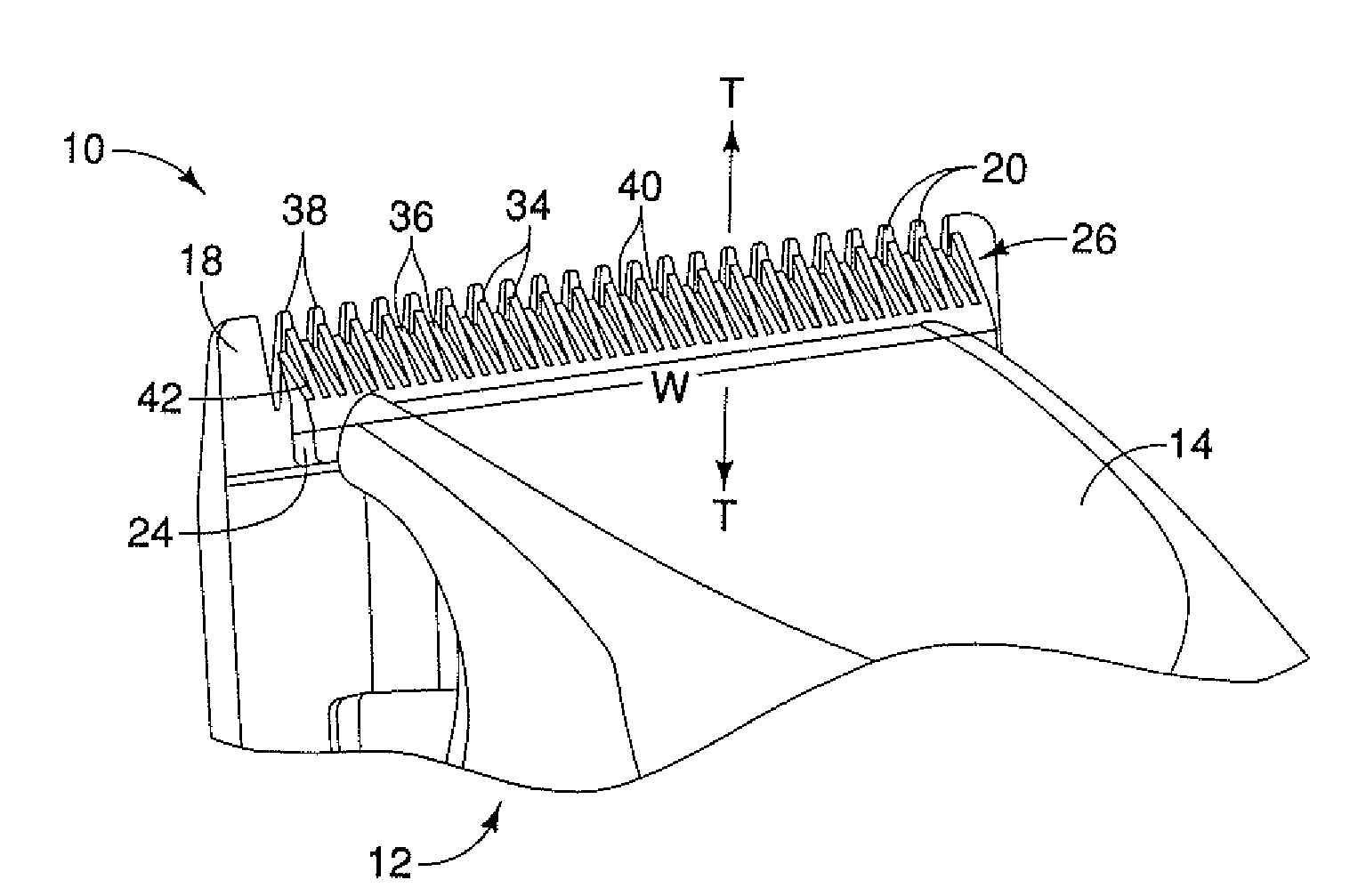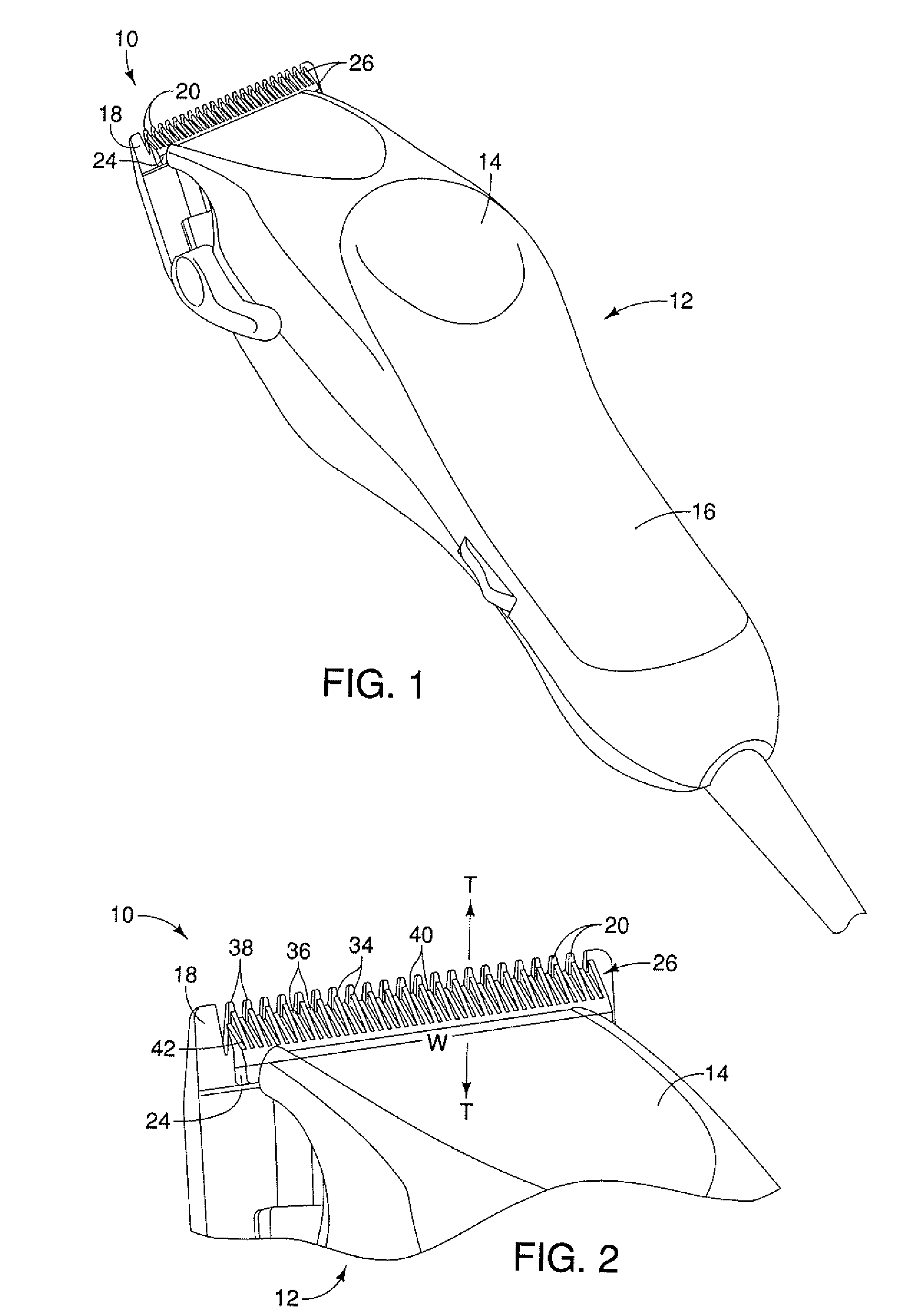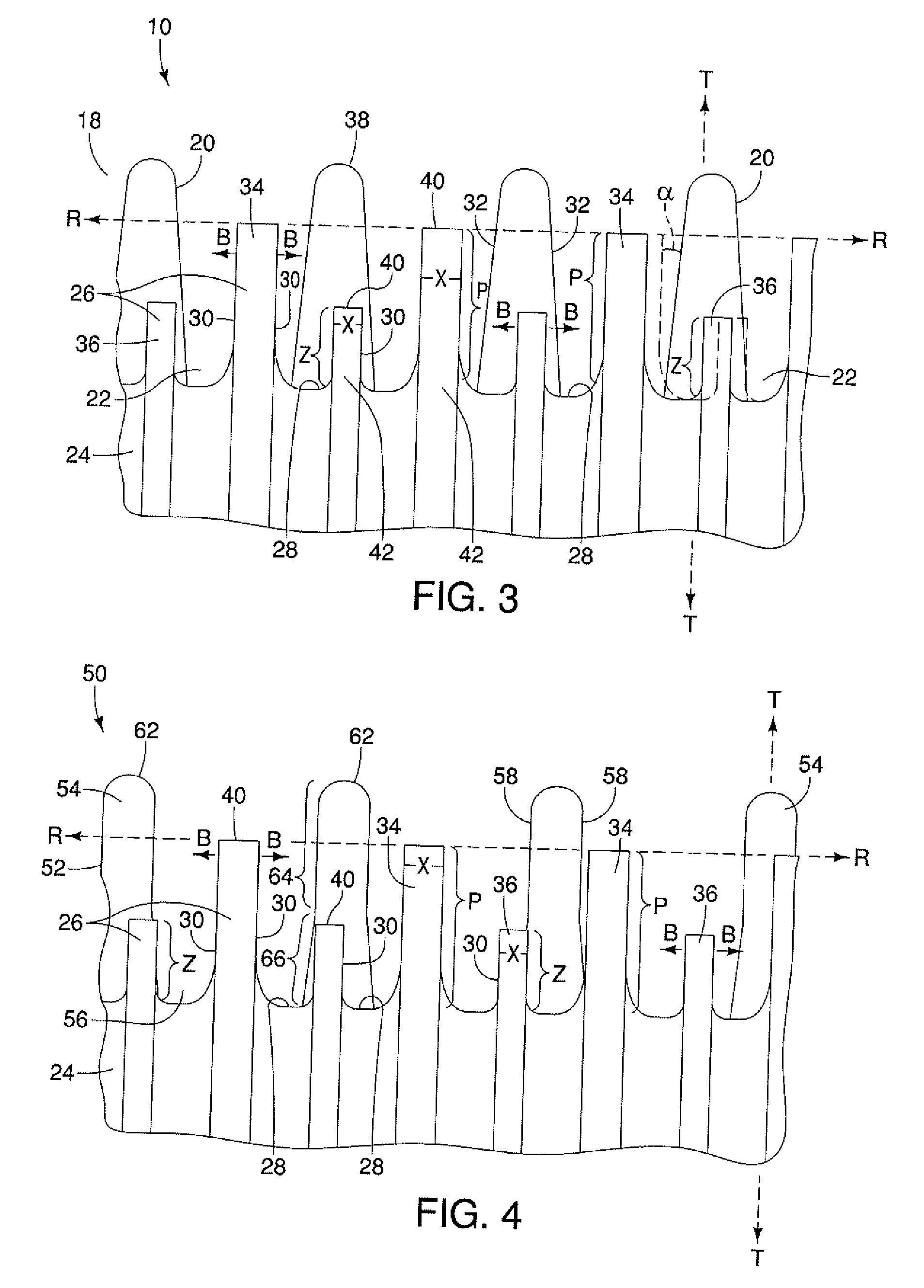Bladeset for a hair cutting apparatus
a hair cutting and blade technology, applied in the direction of metal working devices, etc., can solve the problems of hair still overloading or becoming caught in the blade cavity, the blade stalling, and the hair can still be separated or failed to properly cut hair, so as to reduce the overload effect, increase the density of teeth, and reduce the effect of overload
- Summary
- Abstract
- Description
- Claims
- Application Information
AI Technical Summary
Benefits of technology
Problems solved by technology
Method used
Image
Examples
Embodiment Construction
[0013]Referring now to FIG. 1, a hair clipper bladeset is provided and generally designated 10. As known in the art, the bladeset 10 is attached to a hair clipper 12 including a housing 14 having a generally elongate handle 16. The housing 14 generally encloses an electric motor and drive system (not shown) operatively connected to the bladeset 10.
[0014]As seen in FIGS. 1-3, the bladeset 10 includes at least one stationary blade 18 having a plurality of stationary blade teeth 20 defining stationary blade teeth cavities or spaces 22 between adjacent teeth, and at least one moving blade 24 having a plurality of moving blade teeth 26 defining moving blade teeth cavities or spaces 28 between adjacent teeth. The stationary blade 18 is connected to the housing 14 by any suitable fastening technology, such as screws or the like (not shown). The moving blade 24 is configured for laterally reciprocating relative to the stationary blade 18 for cutting hair therebetween in a scissors action, a...
PUM
 Login to View More
Login to View More Abstract
Description
Claims
Application Information
 Login to View More
Login to View More - R&D
- Intellectual Property
- Life Sciences
- Materials
- Tech Scout
- Unparalleled Data Quality
- Higher Quality Content
- 60% Fewer Hallucinations
Browse by: Latest US Patents, China's latest patents, Technical Efficacy Thesaurus, Application Domain, Technology Topic, Popular Technical Reports.
© 2025 PatSnap. All rights reserved.Legal|Privacy policy|Modern Slavery Act Transparency Statement|Sitemap|About US| Contact US: help@patsnap.com



